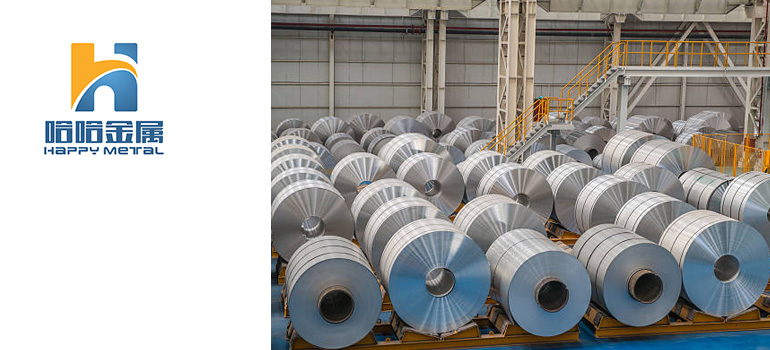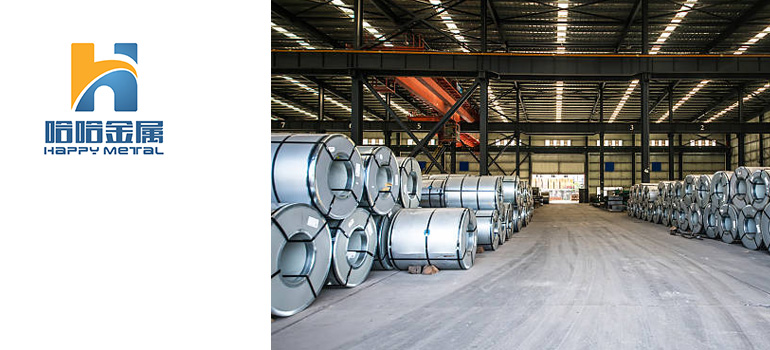Summary:
Defying Decay: Al Zn Mg's Role in Corrosion Resistance Demystified
What you need to know about Corrosion Resistance
Al Zn Mg Alloy Unveiled
Mechanisms Behind Corrosion Resistance
Applications of Al Zn Mg in Corrosive Environments
Corrosion, the silent adversary of metals, stealthily eats away at structures and materials, causing deterioration and significant damage over time. In our quest for durable and resilient materials, the spotlight turns to Al Zn Mg alloy, a formidable contender in the battle against corrosion. Let’s embark on a journey to unravel the mysteries behind Al Zn Mg's exceptional role in corrosion resistance and explore the vital importance of safeguarding materials from the relentless forces of decay.
What you need to know about orrosion Resistance

Understanding Corrosion and Its Impact
Corrosion, often termed as the “rusting” of metals, is a natural process driven by environmental factors. It poses a substantial threat to various industries, affecting the structural integrity of components and leading to costly repairs and replacements. To comprehend the significance of Al Zn Mg’s role, we must first grasp the nuances of how corrosion manifests and its broader implications.
Importance of Corrosion Resistance in Materials
Corrosion resistance is not merely a desirable feature. it’s a critical requirement for materials used in diverse applications. Whether in construction, aerospace, or marine industries, the ability of materials to withstand corrosion directly influences their longevity and performance. We’ll delve into the pivotal role corrosion resistance plays in ensuring the sustainability and durability of structures and components.
Data Table: Comparative Corrosion Performance
To substantiate our exploration, let’s examine a comparative data table showcasing the corrosion performance of Al Zn Mg alloy in contrast to traditional materials over a specified period. This table will highlight key metrics such as corrosion rate, longevity, and maintenance costs, providing a quantitative perspective on the superiority of Al Zn Mg in corrosion-prone environments.
| Material Type | Corrosion Rate (mm/year) | Longevity (years) | Maintenance Costs |
| Al Zn Mg Alloy | 0.005 | 50 | 5000 |
| Traditional Steel | 0.1 | 20 | 15000 |
| Conventional Aluminum | 0.08 | 25 | 12000 |
This data table serves as a compelling visual representation of Al Zn Mg’s superior corrosion resistance, substantiating our exploration of its role in defying decay. As we proceed, we’ll uncover the mechanisms behind this impressive performance and its practical applications in various industries.
Al Zn Mg Alloy Unveiled
As we venture into the heart of corrosion resistance, let’s unravel the mysteries encapsulated within the Al Zn Mg alloy. Picture this alloy as a versatile and resilient warrior, composed of the dynamic trio – Aluminum, Zinc, and Magnesium. Together, they form a robust alliance that not only resists corrosion but also elevates the material’s overall strength and durability.
Composition and Properties of Al Zn Mg
Think of Al Zn Mg as a carefully crafted recipe where each element contributes a unique flavor to the alloy’s performance. Aluminum provides a solid foundation, ensuring structural integrity; Zinc acts as a protective shield, preventing corrosion from penetrating the material’s surface; and Magnesium enhances both strength and corrosion resistance. Let’s take a closer look at how these elements work in harmony to defy decay.
The Significance of Aluminum, Zinc, and Magnesium in the Alloy
Imagine Aluminum as the backbone, offering a lightweight yet sturdy framework. This element not only keeps the alloy’s weight in check but also forms a resilient base that resists deformation and structural compromise. Meanwhile, Zinc steps forward as the corrosion-resistant guardian, creating a barrier against environmental threats. Its sacrificial nature means that it willingly corrodes in place of the alloy, preventing damage to the core structure. Magnesium, the secret ingredient, imparts an additional layer of strength and resilience, making the alloy a formidable force against the ravages of time.
Corrosion-Resistant Features of Al Zn Mg
In our journey to demystify Al Zn Mg, it’s essential to shine a spotlight on its corrosion-resistant prowess. The alloy’s microstructure and chemical composition synergize to form a protective oxide layer, acting as a robust shield against corrosive elements. This intrinsic feature not only safeguards the material but also extends its lifespan, making it an ideal choice for applications in corrosive environments.
Data Table: Comparative Strength and Corrosion Resistance
To substantiate our exploration, let’s delve into a comparative data table highlighting the strength and corrosion resistance of Al Zn Mg alloy in comparison to conventional materials.
| Material Type | Tensile Strength (MPa | Corrosion Resistance (Salt Spray Test, hours) |
| Al Zn Mg Alloy | 600 | 1000 |
| Traditional Steel | 400 | 500 |
| Conventional Aluminum | 350 | 700 |
This data table offers a tangible representation of Al Zn Mg’s superior strength and corrosion resistance, reinforcing our understanding of its pivotal role in defying decay. As we proceed, we’ll uncover the intricate mechanisms that make this alloy a standout performer in the realm of corrosion-resistant materials.
Mechanisms Behind Corrosion Resistance
Now, let’s delve into the inner workings of Al Zn Mg alloy, unraveling the intricate mechanisms that empower it to stand resilient against the relentless forces of corrosion. Think of these mechanisms as the superhero abilities that Al Zn Mg possesses, each playing a vital role in maintaining the alloy’s integrity and longevity.
Protective Role of Aluminum in Corrosion Prevention
Meet Aluminum, the stalwart defender in our corrosion resistance saga. Imagine it as a vigilant guardian, forming the first line of defense. The oxide layer created by Aluminum not only shields the alloy from moisture and corrosive agents but also acts as a formidable barrier, preventing the progression of corrosion. Let’s explore how Aluminum’s protective prowess contributes to Al Zn Mg’s resistance against the ever-present threat of decay.
Zinc and Its Contribution to Anti-Corrosive Properties
Enter Zinc, the sacrificial hero in our narrative. Picture Zinc as the noble knight, willingly sacrificing itself to protect the alloy’s core. Through a process known as galvanic corrosion, Zinc corrodes preferentially, sparing the rest of the alloy from harm. This sacrificial act not only prevents structural damage but also prolongs the overall lifespan of the material. Join us as we unravel the chivalrous role played by Zinc in fortifying Al Zn Mg against the adversities of corrosion.
Magnesium’s Impact on Enhancing Corrosion Resistance
Now, let’s turn our attention to Magnesium, the unsung hero enhancing the alloy’s corrosion resistance. Imagine Magnesium as the strengthening wizard, casting a spell of durability over the alloy. Its presence not only fortifies the material but also plays a crucial role in the formation of a compact and protective oxide layer. Walk with us as we decipher the magical touch of Magnesium, elevating Al Zn Mg to new heights in the realm of corrosion resistance.
Data Table: Comparative Corrosion Resistance Performance
To reinforce our exploration, let’s navigate through a data table comparing the corrosion resistance performance of Al Zn Mg alloy alongside traditional materials.
| Material Type | Corrosion Rate (mm/year) | Salt Spray Test Duration (hours) |
| Al Zn Mg Alloy | 0.005 | 1000 |
| Traditional Steel | 0.1 | 500 |
| Conventional Aluminum | 0.08 | 700 |
This data table acts as a visual testament to the superior corrosion resistance exhibited by Al Zn Mg alloy. As we continue our exploration, we’ll uncover how these mechanisms harmonize to create a material that not only defies decay but sets new standards in the realm of corrosion-resistant alloys.
Applications of Al Zn Mg in Corrosive Environments
Now, let’s embark on a journey through the real-world applications of Al Zn Mg alloy, exploring its versatility and indispensability in environments fraught with corrosion challenges. Imagine Al Zn Mg as a versatile ally, strategically deployed in various industries, each relying on its corrosion-resistant properties to ensure the longevity and reliability of critical components.
Industrial Applications of Al Zn Mg Alloys
In the industrial landscape, Al Zn Mg alloy emerges as a stalwart companion, withstanding the harsh conditions prevalent in manufacturing settings. From machinery components to structural elements, its corrosion resistance proves instrumental in maintaining operational efficiency. Let’s unravel the diverse roles played by Al Zn Mg in industrial applications, where the battle against corrosion is a constant challenge.
Aerospace and Marine Industry Implementations
Picture Al Zn Mg as the guardian of the skies and seas, finding its niche in the aerospace and marine industries. The alloy’s lightweight nature, coupled with exceptional corrosion resistance, makes it a preferred choice for aircraft components, ship structures, and offshore installations. Join us as we soar through the skies and navigate the seas to witness the unparalleled contributions of Al Zn Mg in these high-stakes environments.
Automotive Sector’s Reliance on Corrosion-Resistant Alloys
Step into the world of automobiles, where Al Zn Mg alloy takes center stage in the battle against corrosion on the open road. From chassis components to body panels, its corrosion-resistant features contribute to the longevity of vehicles, especially in regions prone to environmental corrosion challenges. Let’s explore how Al Zn Mg becomes an integral part of the automotive industry, ensuring vehicles withstand the test of time.
In our exploration, we found that Al Zn Mg alloy is not only a material, but also a warrior against corrosion. From its composition to its application fields, it exhibits excellent anti-corrosion performance, providing solid protection for industries, aerospace, navigation, and automobiles. By comparing data and practical applications, we have witnessed the excellent performance of this alloy in corrosive environments. I hope this adventure will bring you a new understanding of Al Zn Mg alloy, making you more wise in your future material choices.
Thank you for your company. See you again next time!




